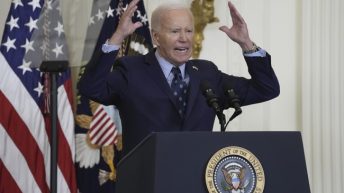The bronze statue of Confederate Gen. Albert Pike, removed and damaged during 2020 unrest, has quietly been put back in place in Judiciary Square with fencing and signage indicating ongoing preservation work. The move has stirred reaction across the city, raising questions about public memory, restoration, and the lines between history and controversy. Officials framed the reinstallation as conservation rather than a political statement, while residents and activists responded in varied and pointed ways. This article outlines what happened, why it matters, and how people are reacting.
The statue was originally toppled and burned by demonstrators in 2020 during a wave of protests and unrest that targeted Confederate monuments nationwide. That episode left the monument badly scarred and sparked a debate that went beyond local politics, touching on national conversations about race and public spaces. The decision to bring the statue back to Judiciary Square is therefore loaded with symbolism, not just a maintenance task. For many, the return raises old wounds and fresh disagreements.
Crew members placed the figure back on its pedestal under the watch of fencing and workers, with visible signage that read “Historic preservation work in progress,” as crews focused on conservation efforts. Officials presenting the work described it as preservation and stabilization of a piece of history, rather than an endorsement of the views the figure represented. That distinction is central to how public officials justify treating contested monuments: the aim, they say, is to conserve an artifact of the past while contextualizing its place in public spaces. Skeptics argue that the very act of reinstalling a Confederate statue in a prominent location sends a message regardless of intent.
Local authorities emphasized procedural and legal steps behind the move, noting that public property and historical commissions guide how such items are handled. Those procedural explanations are intended to depoliticize the act, but many observers point out that procedures exist within political systems and are influenced by elected officials. The optics matter: who ordered the reinstallation, how decisions were communicated, and whether community voices were adequately heard. The lack of broad public consensus tends to intensify scrutiny and backlash.
Reactions among residents and activists ranged widely, from calls for permanent removal to arguments for preservation with added context. Some community members said returning the statue without a robust education or interpretive framework risks repeating past mistakes. Others argued that erasing physical artifacts of history is a slippery slope and that preservation—paired with plaques or exhibits that explain context—can be a better approach. That debate reflects deeper differences over how societies should reckon with contested histories.
Legal and logistical concerns also factored into the decision to reinstall the statue. Removing or relocating a large bronze piece can be costly and legally complicated, particularly if the monument sits on federal land or is subject to preservation statutes. Budget lines, contractor availability, and permits all play a role in whether a city can act quickly to relocate such objects. These practical realities often shape outcomes more than public sentiment alone.
The return of the Pike statue is likely to fuel ongoing discussions about the future of monuments in public spaces. Advocates for preservation say that maintaining historical artifacts allows for educational opportunities and truthful engagement with the past. Those who want removal insist that honoring individuals tied to slavery and rebellion has no place in civic landscapes meant to represent everyone. Both sides frame their positions as moral and civic responsibilities, which makes compromise difficult.
Moving forward, the handling of the Albert Pike statue could become a template for how similar cases are treated around the country. If the site receives added interpretive materials, open forums, or relocation to museum settings, those moves might ease tensions for some. If, instead, the statue remains without meaningful context or community input, opposition will likely intensify. Either way, the episode underscores that monuments are not inert objects; they continue to shape public life and political debate.




Add comment